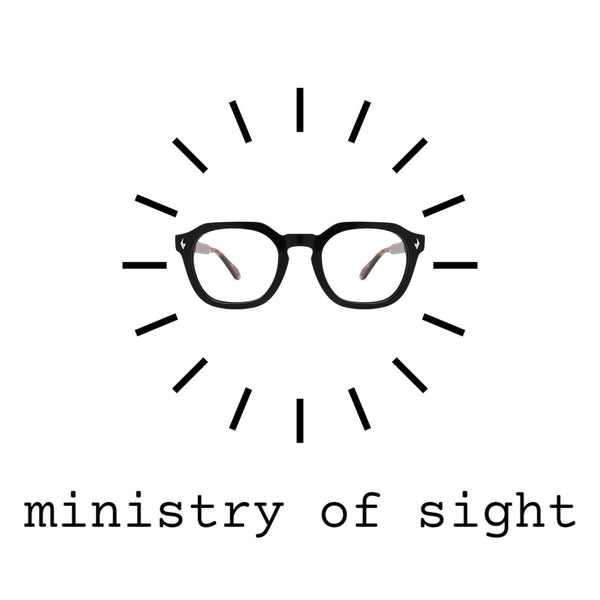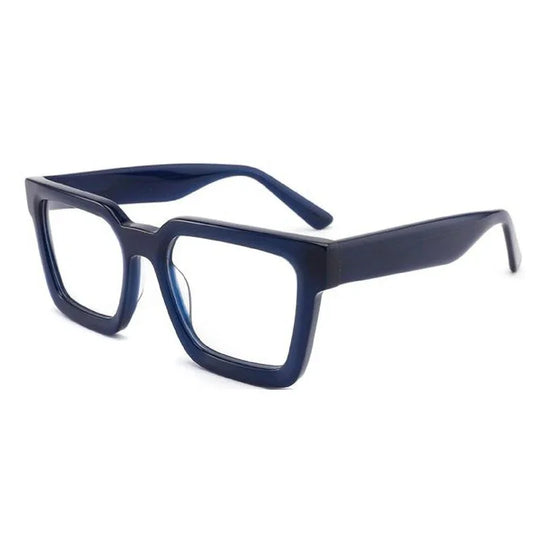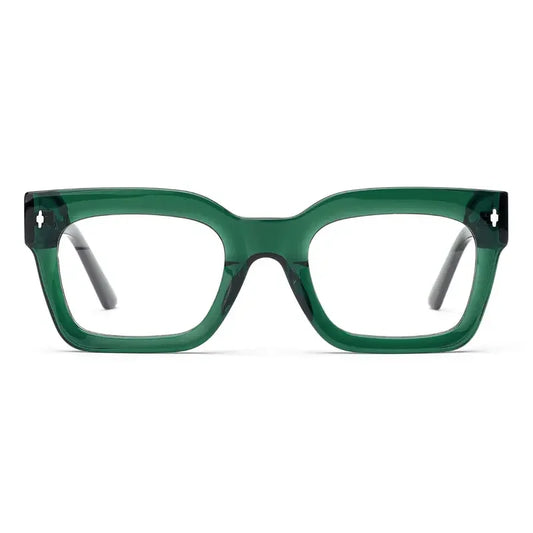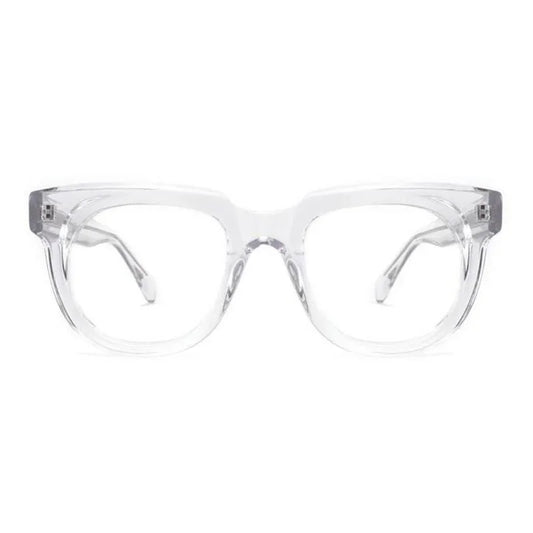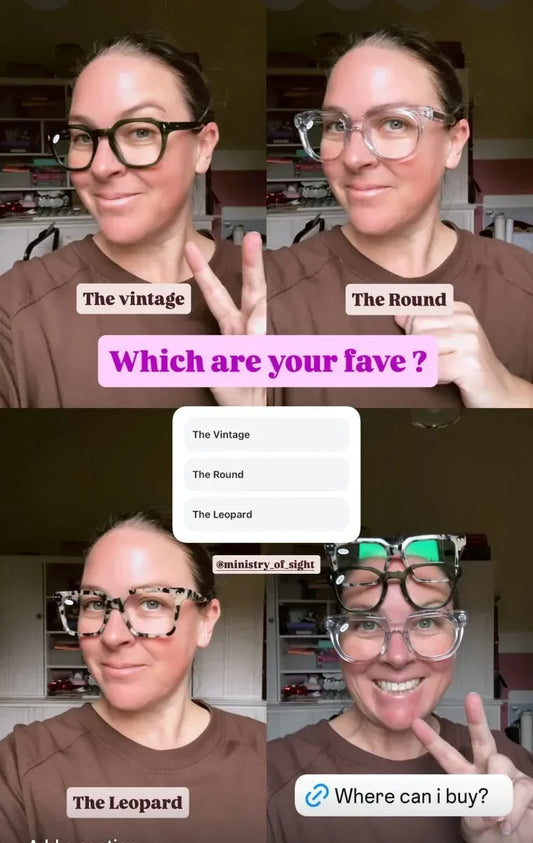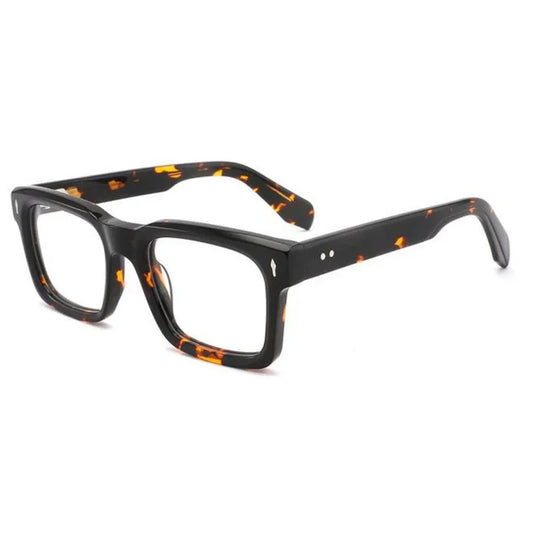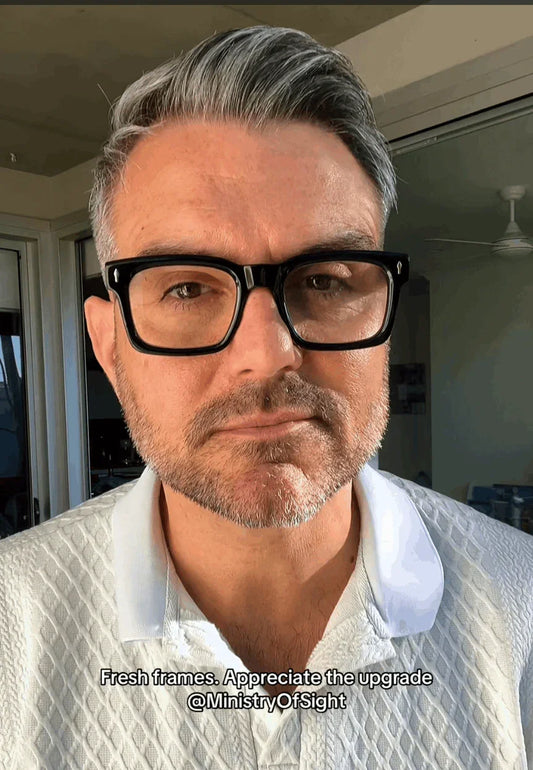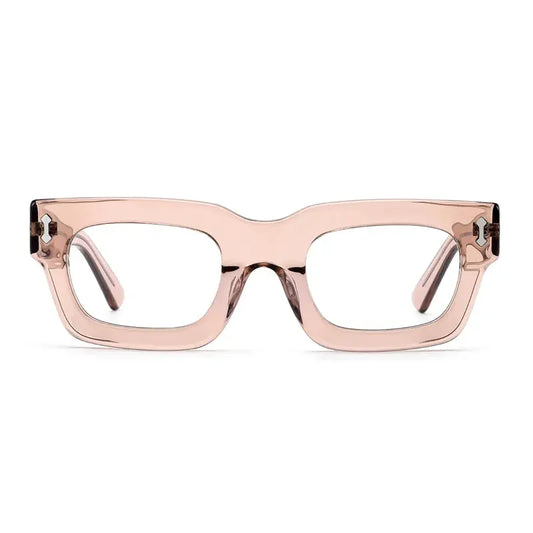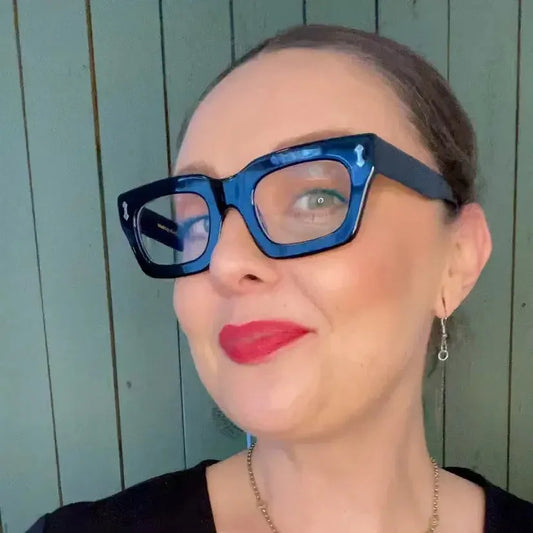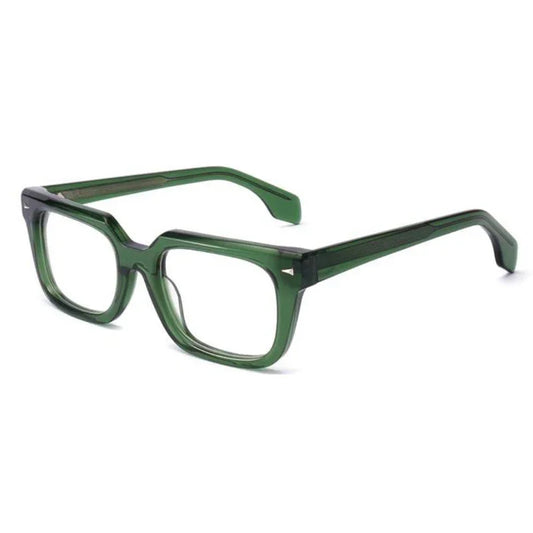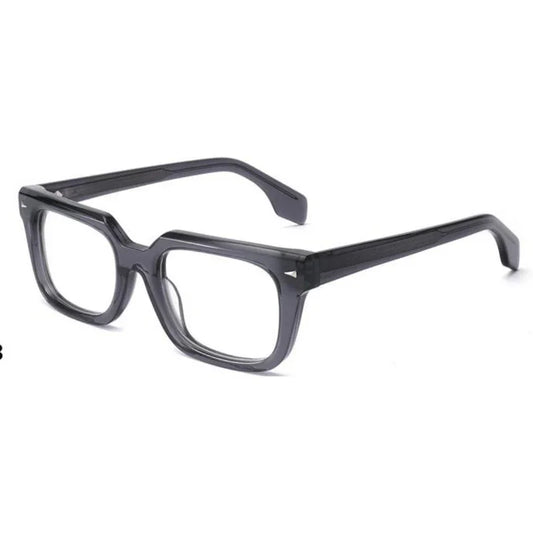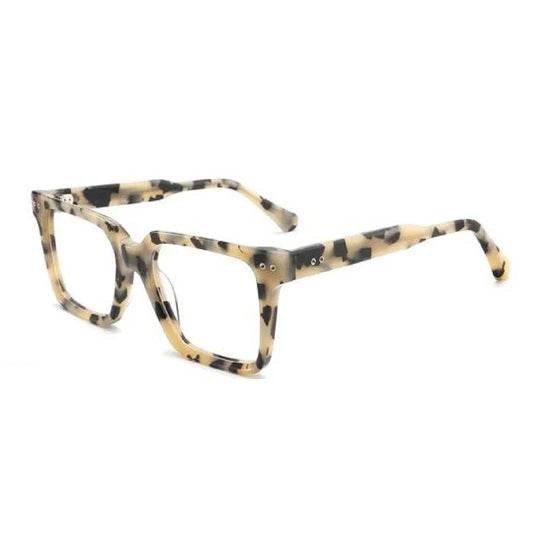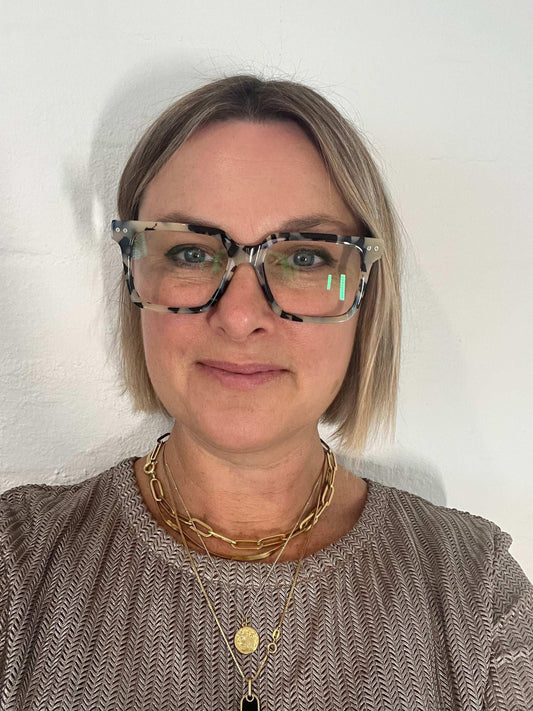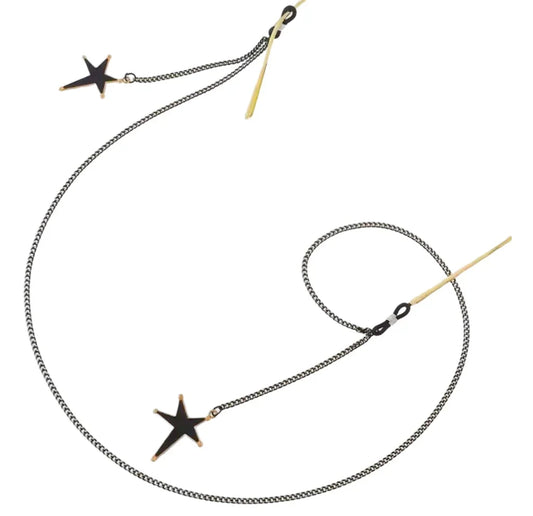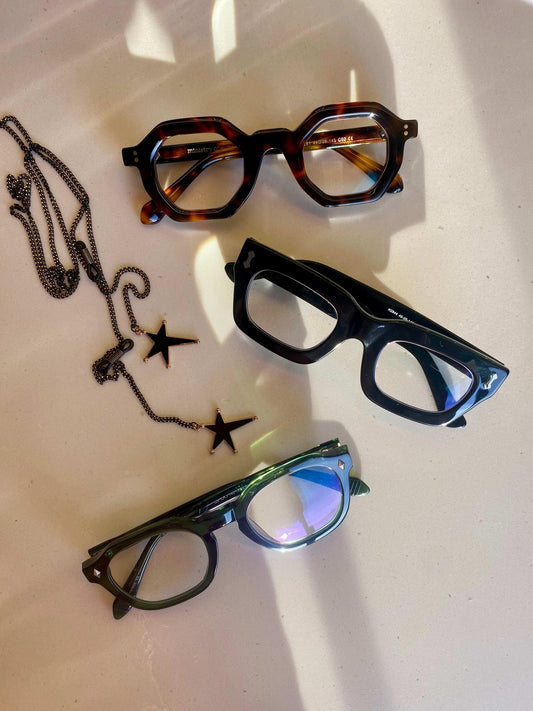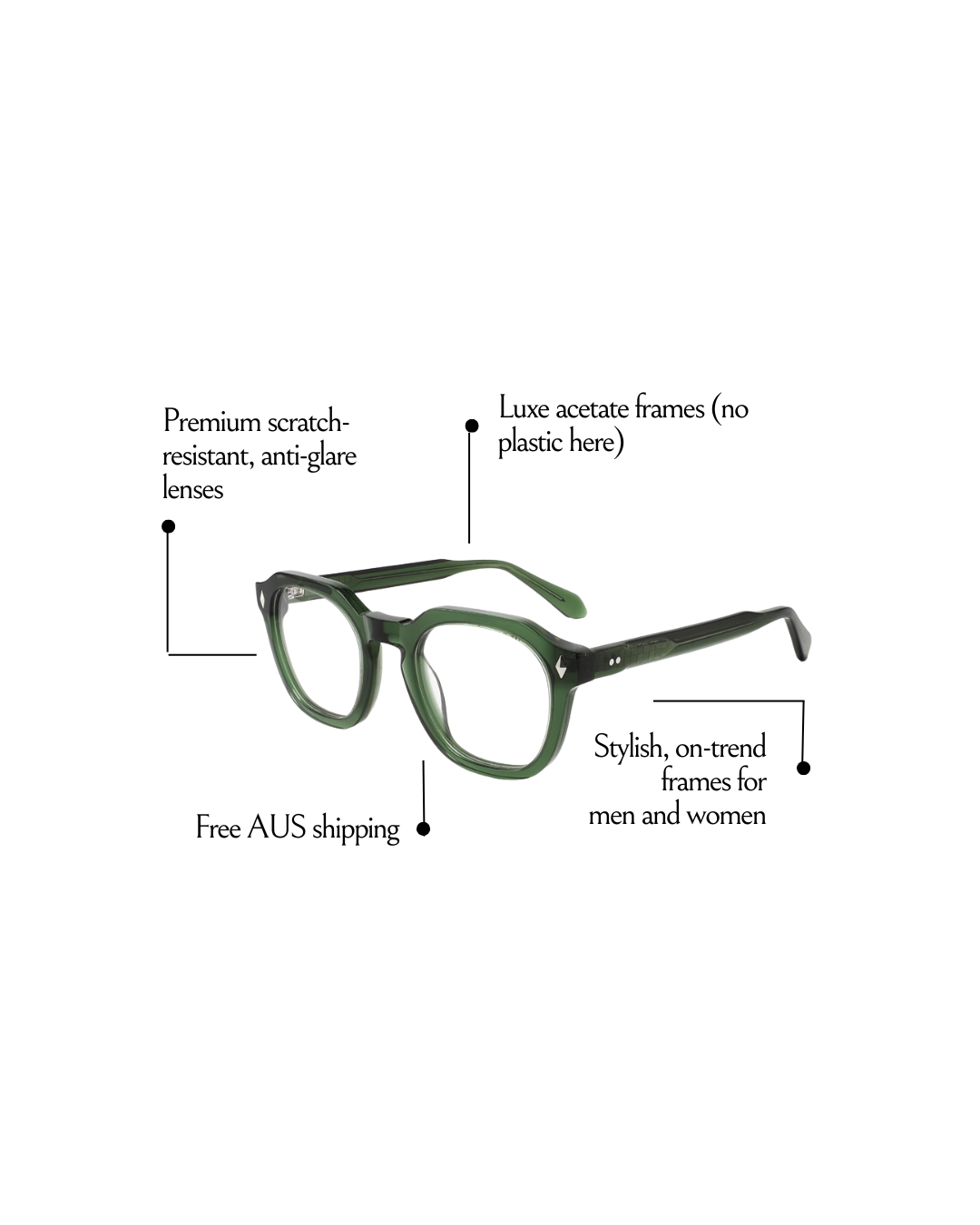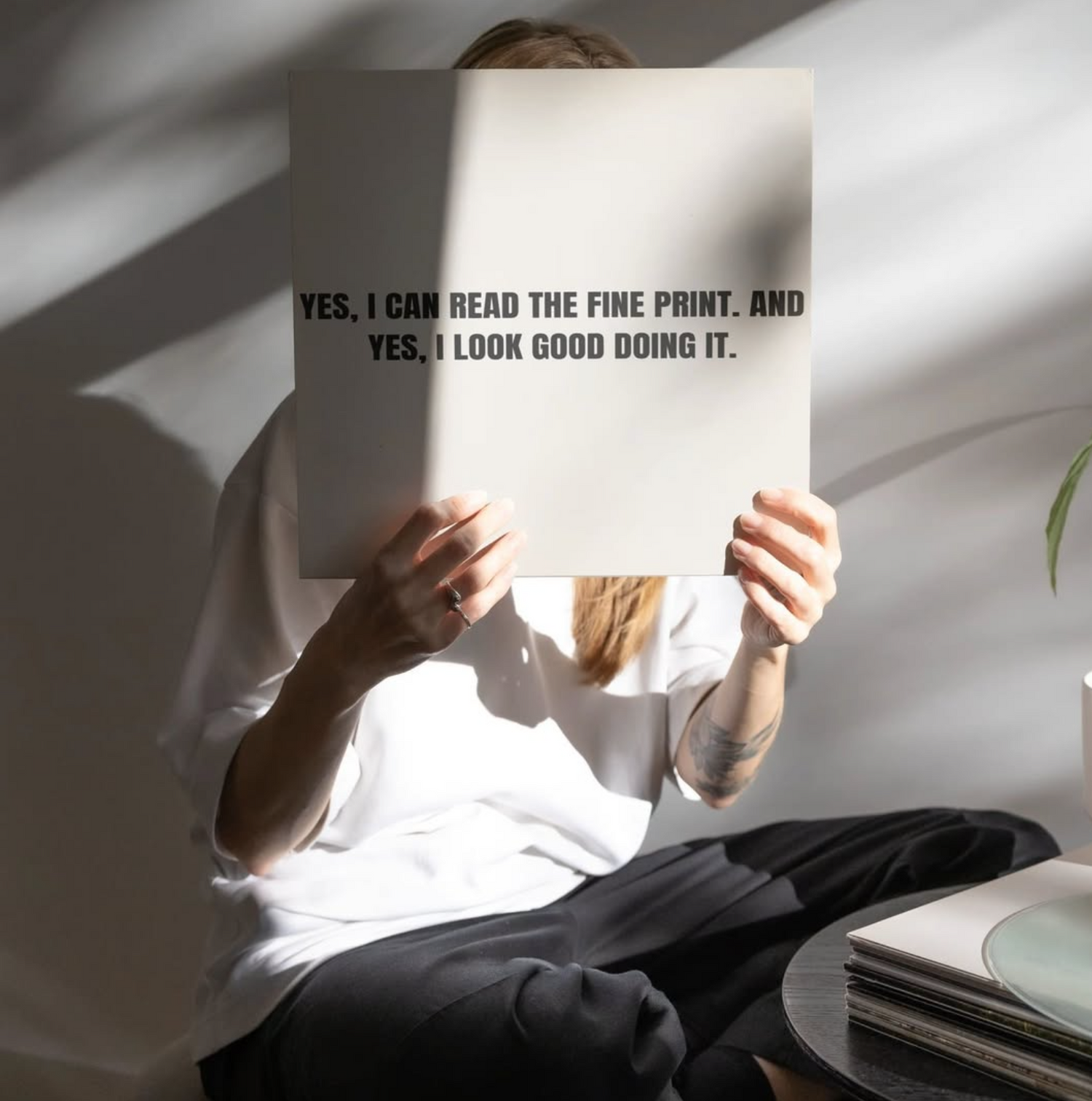
Complete Guide to How Reading Glasses Work
Nearly two billion people worldwide develop presbyopia by their mid-40s, suddenly finding books, screens, and fine print harder to read. This gradual change can be frustrating, but it is part of the natural aging process for your eyes. Knowing how reading glasses work and how to choose the right pair can make everyday tasks easier so you can keep enjoying your favorite activities without missing a beat.
Key Takeaways
| Point | Details |
|---|---|
| Understanding Presbyopia | Presbyopia typically begins around age 40, as the eye’s lens loses flexibility, making close-up tasks challenging. Reading glasses offer a simple solution by providing fixed magnification to restore clear near vision. |
| Types of Reading Glasses | There are various types of reading glasses: standard, bifocal, and progressive, each designed for different vision needs. |
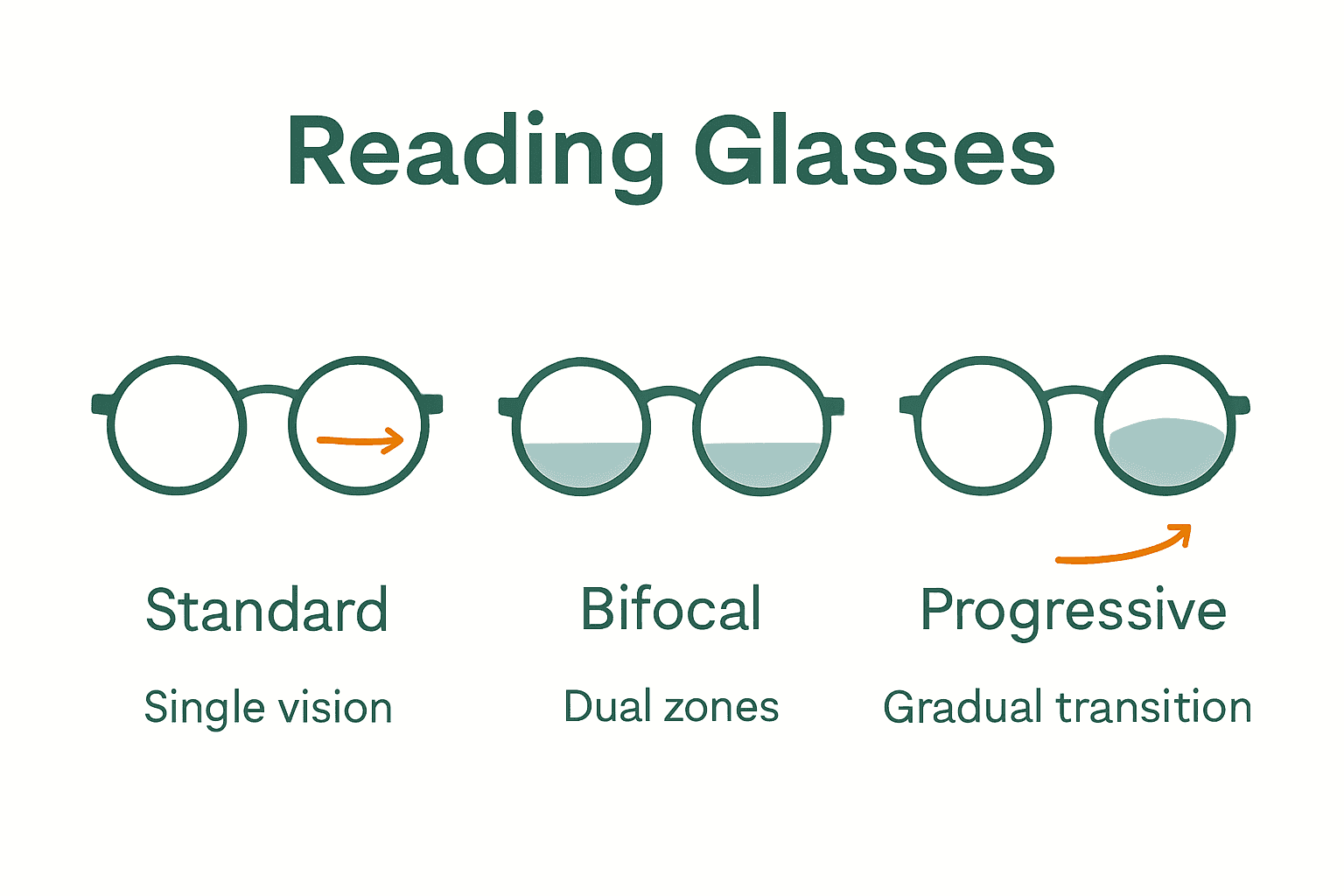 Selecting the right type depends on your specific tasks and comfort preferences. |
| Importance of Diopter Strength | Diopter strength is crucial for selecting reading glasses, typically starting around +1.00 in the early 40s and increasing with age. Consulting an eye care professional can help determine the appropriate magnification for your needs.
Selecting the right type depends on your specific tasks and comfort preferences. |
| Importance of Diopter Strength | Diopter strength is crucial for selecting reading glasses, typically starting around +1.00 in the early 40s and increasing with age. Consulting an eye care professional can help determine the appropriate magnification for your needs.
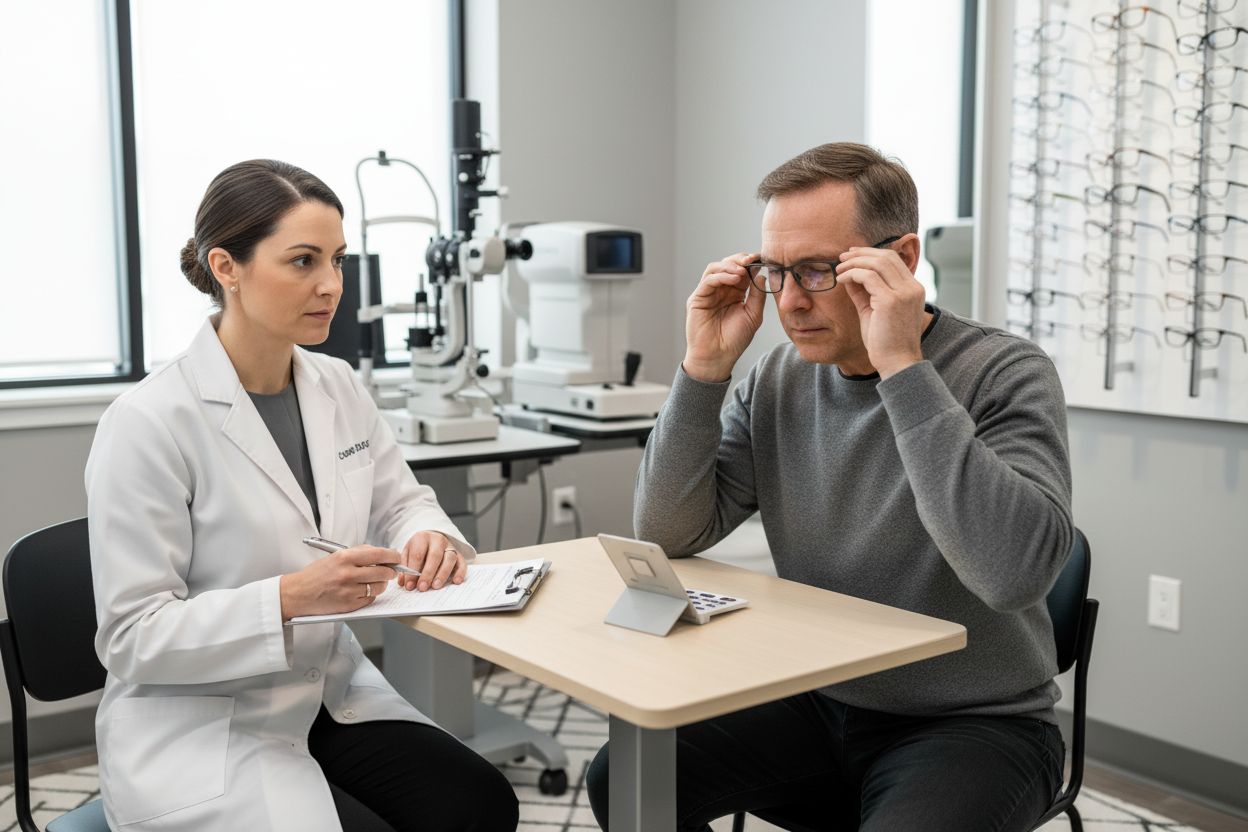 |
| Care and Maintenance Tips | Proper care, including using a microfiber cloth for cleaning and storing glasses in a protective case, ensures longevity. Avoid common pitfalls like using improper cleaning methods or neglecting regular updates as vision changes. |
|
| Care and Maintenance Tips | Proper care, including using a microfiber cloth for cleaning and storing glasses in a protective case, ensures longevity. Avoid common pitfalls like using improper cleaning methods or neglecting regular updates as vision changes. |
Table of Contents
- Defining Reading Glasses And Presbyopia
- Main Types Of Reading Glasses Explained
- How Reading Glasses Correct Vision
- Selecting The Right Reading Glasses
- Common Mistakes And Care Tips
Defining Reading Glasses And Presbyopia
As you enter your 40s, you might start noticing something peculiar happening with your vision. Suddenly, reading menus, messages on your phone, or even threading a needle becomes surprisingly challenging. Welcome to presbyopia - an age-related vision condition that affects nearly everyone progressively.
Precisely speaking, presbyopia occurs when your eye’s lens becomes less flexible, making it harder to focus on close-up objects. Think of your eye’s lens like a camera lens that gradually loses its ability to zoom in smoothly. Around age 40, most people begin experiencing this natural change, which makes near vision tasks increasingly difficult. Learn more about understanding reading glasses to manage this transition effectively.
Reading glasses emerge as the straightforward solution to this vision challenge. They provide fixed magnification powers (measured in diopters) typically ranging from +1.00 to +3.00, helping compensate for your eye’s reduced focusing ability. The right pair can restore your ability to read comfortably, work on detailed tasks, and enjoy activities that require close-up vision.
- Typical presbyopia progression starts around age 40-45
- Magnification needs often increase gradually over time
- Reading glasses are non-invasive and easily adjustable
Understanding presbyopia isn’t about admitting defeat - it’s about adapting smartly to your body’s natural changes and maintaining your quality of life.
Main Types Of Reading Glasses Explained
When it comes to reading glasses, one size definitely does not fit all. Different types of glasses cater to various vision needs, ensuring everyone can find their perfect visual companion. Check out our comprehensive guide on reading glasses types to explore the full range of options.
Standard Reading Glasses
Standard reading glasses are the most straightforward solution for presbyopia. These come with a single, fixed magnification power designed specifically for close-up tasks like reading, using your phone, or doing detailed craftwork. Think of them like a dedicated tool for near vision - simple, effective, and perfect for those who spend a lot of time reading or doing close-up work.
Bifocal Reading Glasses
Bifocal reading glasses offer a bit more versatility. They feature two distinct lens zones: the top part for distance vision and the bottom part for near vision. This design allows you to switch between looking at far-away objects and reading materials without changing glasses. It’s like having two vision superpowers in one frame.
Progressive Lenses
The most sophisticated option is progressive lenses. These advanced glasses provide a seamless gradient of lens power, transitioning smoothly from distance vision at the top to full reading magnification at the bottom. Unlike traditional bifocals that create an abrupt image jump, progressive lenses offer a more natural visual experience.
- Ideal for people who need correction at multiple distances
- Eliminate the visible line between lens powers
- Provide a more natural, continuous vision experience
Choosing the right reading glasses is about understanding your unique vision needs and lifestyle. Whether you’re a bookworm, a professional, or someone who enjoys detailed hobbies, there’s a perfect pair waiting for you.
Here’s a comparison of the main types of reading glasses:
| Type | Key Features | Best For |
|---|---|---|
| Standard Reading Glasses | Single fixed magnification Simple use |
Reading Craftwork Phone use |
| Bifocal Glasses | Two lens zones Distance & near vision |
Switching focus All-day wear |
| Progressive Lenses | Gradual lens power No visible line |
Multifocal needs Natural vision |
How Reading Glasses Correct Vision
Imagine your eyes as complex cameras with automatic focus mechanisms. As you age, this natural focusing ability starts to malfunction. Learn more about the role of reading glasses and how they restore your visual clarity.
The Science of Refraction
Refraction is the key to understanding how reading glasses work. These specialized lenses bend light rays before they enter your eye, strategically converging them onto the retina. When your eye’s natural lens becomes less flexible with age, reading glasses step in to compensate, ensuring that close-up objects appear sharp and clear.
Diopter Power Explained
Diopter strength determines how much light is bent to help you focus. These single-vision lenses come with positive diopter ratings ranging from +1.00 to +3.00, each increment helping to correct your near vision. It’s like having a precise optical adjustment tool for your eyes, allowing you to read, work on detailed tasks, or enjoy hobbies that require close-up focus.
Lens Correction Strategies
Reading glasses employ several sophisticated strategies to correct vision:
- Convergence correction: Bending light rays to focus precisely on the retina
- Magnification: Enlarging near objects to improve visual clarity
- Accommodative assistance: Compensating for the eye’s reduced focusing ability
The magic happens through carefully designed lens geometry that understands exactly how to redirect light for optimal near vision. Whether you choose standard reading glasses, bifocals, or progressive lenses, the fundamental goal remains the same: giving you crystal-clear vision for those important close-up moments.
Selecting The Right Reading Glasses
Finding your perfect pair of reading glasses isn’t about guesswork - it’s about understanding your unique vision needs. Check out our complete reading glasses selection guide to make an informed choice.
Determining Your Magnification Strength
Diopter strength is crucial when selecting reading glasses. Fortunately, presbyopia progresses predictably with age, which means eye care professionals can help estimate your ideal lens power. Most people start around +1.00 to +1.50 in their early 40s, gradually increasing to +2.00 or +2.50 by their mid-50s.
Key Selection Factors
Choosing the right reading glasses involves more than just magnification. Consider these essential elements:
- Comfort: Frame material and weight
- Usage: Intended primary activities (reading, computer work, crafts)
- Style: Frame shape that complements your face
- Lens quality: Scratch resistance and clarity
Professional vs. Over-the-Counter Options
While over-the-counter reading glasses work perfectly for many people, a professional eye exam can provide more precise recommendations. These exams can help identify:
- Exact magnification needs
- Potential underlying vision issues
- Customized lens options
Remember, reading glasses are about enhancing your quality of life. The right pair should feel like a natural extension of your vision - comfortable, clear, and tailored to your specific needs.
Common Mistakes And Care Tips
Reading glasses are incredibly useful, but they’re not indestructible. Many people unknowingly damage or reduce the effectiveness of their glasses through simple, avoidable mistakes. Discover more about proper reading glasses maintenance to protect your investment.
Handling and Cleaning Mistakes
Cleaning techniques can make or break your reading glasses. Using your shirt, paper towel, or household tissues might seem convenient, but these can scratch your delicate lenses. Instead, always use a microfiber cloth specifically designed for eyewear. Rinse your glasses with lukewarm water and use a gentle, lotion-free dish soap for thorough cleaning.
Storage and Protection
Protective storage is crucial for maintaining your reading glasses. Avoid leaving them in hot cars, direct sunlight, or precariously perched on surfaces where they might fall. Invest in a hard case that provides proper protection when you’re not wearing them. Pro tip: Always place your glasses lens-side up to prevent accidental scratching.
Common Pitfalls to Avoid
- Never use your reading glasses for distance vision
- Replace glasses every 1-2 years as your vision changes
- Don’t share reading glasses with others
- Clean lenses regularly to maintain clarity
Remember, reading glasses are more than an accessory - they’re a critical tool for maintaining your quality of life. Treat them with care, and they’ll serve you well through years of reading, crafting, and enjoying life’s fine details.
Upgrade Your Vision With Reading Glasses That Work For You
Struggling with blurry text, tired eyes, or constantly swapping glasses as presbyopia changes your sight? Discover firsthand how effective reading glasses restore clarity and comfort for every close-up task. You deserve frames that not only solve the problem described in our guide but also match your personal style and daily routine. Start browsing our range of Stylish Reading Glasses for Men and Women to find your perfect fit today.
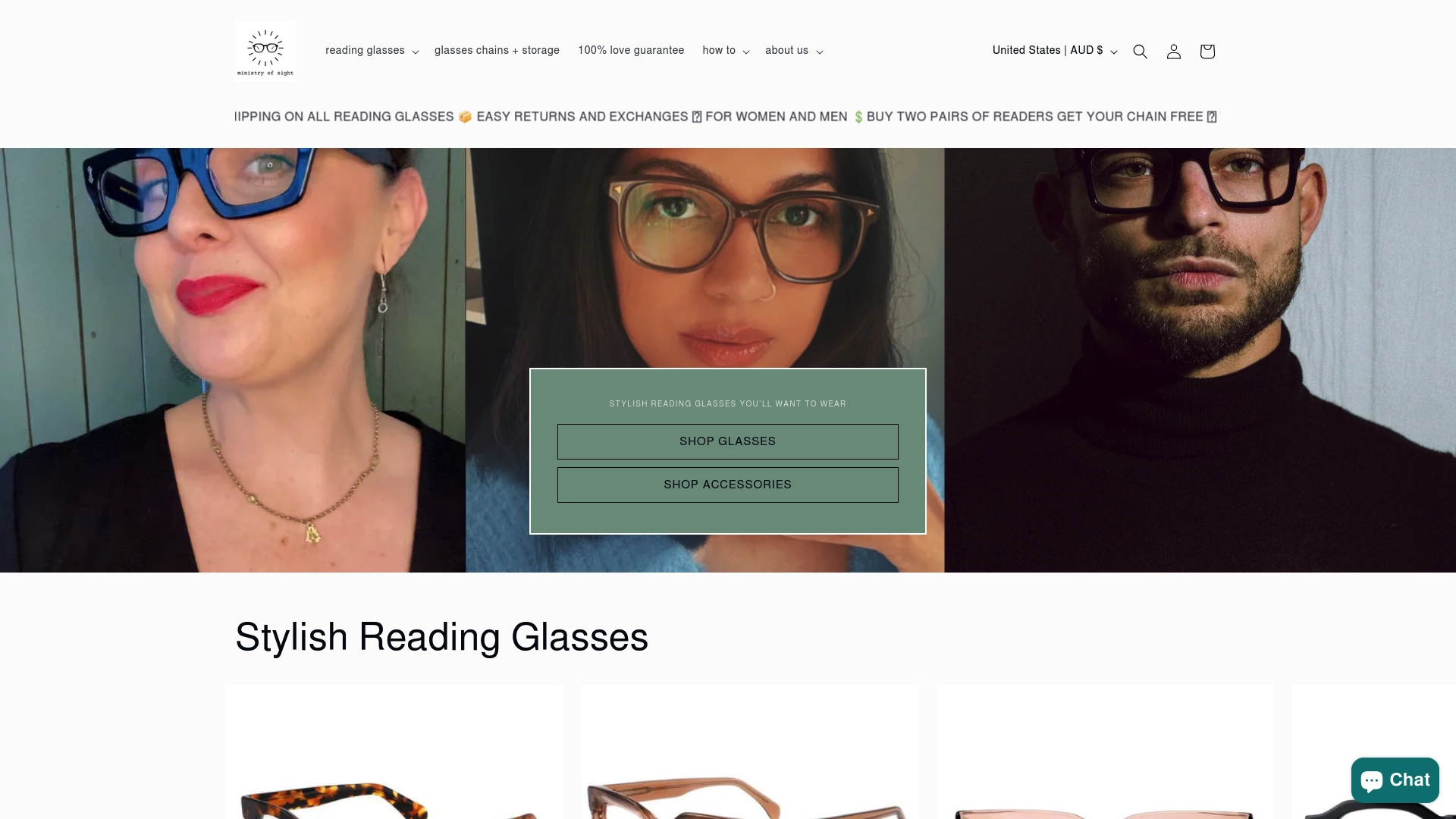
Ready to see the difference? Explore our high-quality designs on ministry of sight and experience the relief of vision tailored to you. Choose your style and make every page, message, and project sharp again. Act now to enjoy clear vision without compromise.
Frequently Asked Questions
What is presbyopia, and how does it affect vision?
Presbyopia is an age-related vision condition that typically begins around age 40. It occurs when the eye’s lens becomes less flexible, making it difficult to focus on close-up objects such as reading or threading a needle.
How do reading glasses correct vision for presbyopia?
Reading glasses correct vision by using specially designed lenses that bend light rays before they enter the eye, improving focus on near objects. They are prescribed with positive diopter ratings, which help compensate for the eye’s reduced ability to accommodate.
What are the different types of reading glasses available?
There are three main types of reading glasses: Standard reading glasses (single fixed magnification), Bifocal reading glasses (two distinct lens zones for distance and near vision), and Progressive lenses (seamless transition of lens power from distance to near vision).
How do I determine the right magnification strength for my reading glasses?
Magnification strength is usually expressed in diopters and varies with age. Most people begin around +1.00 to +1.50 in their early 40s, and this may increase to +2.00 or +2.50 by their mid-50s. An eye care professional can provide specific recommendations based on your vision needs.
Recommended
- Understanding What are Reading Glasses and Their Importance – ministry of sight
- Understanding the Role of Reading Glasses for Adults – ministry of sight
- Understanding the Types of Reading Glasses for Better Vision – ministry of sight
- Understanding the Reading Glasses Fit Guide for Better Vision – ministry of sight
